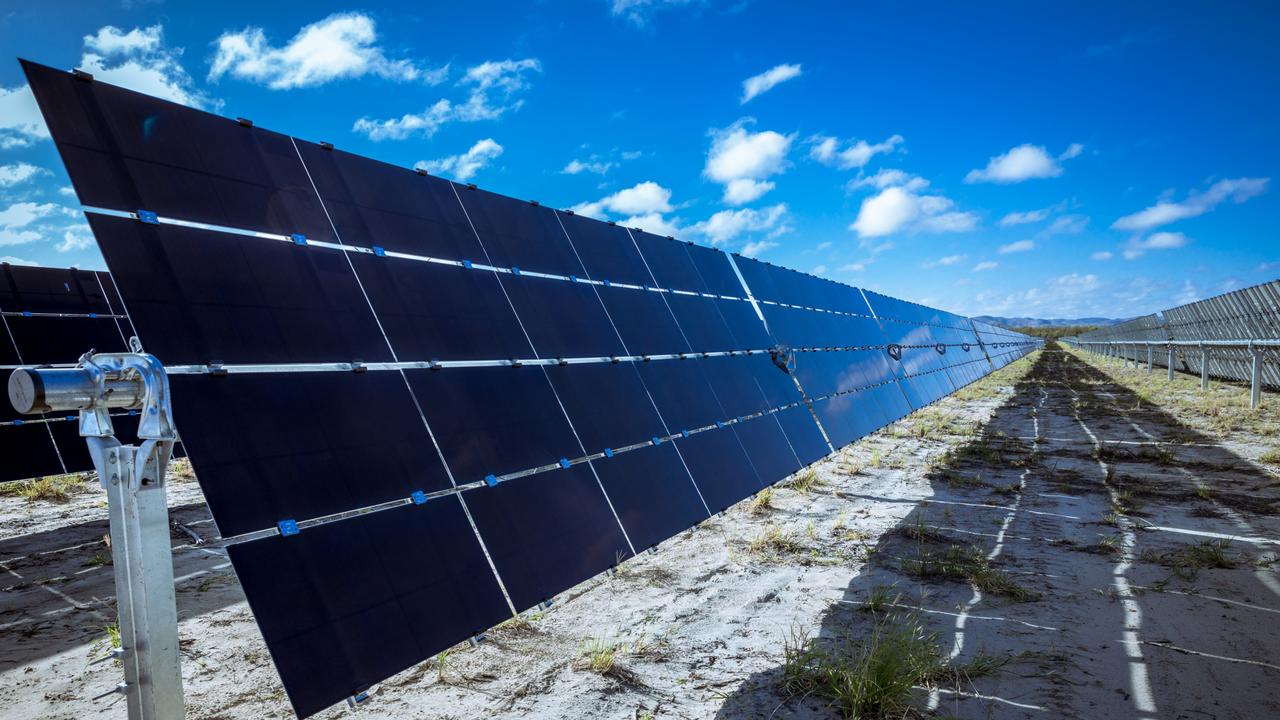Power plan ‘risks energy projects’: EnergyAustralia
EnergyAustralia says Canberra’s plan to underwrite power generation could jeopardise its $1bn project pipeline.

EnergyAustralia, one of the nation’s top three electricity operators, says the federal government’s plan to underwrite power generation could jeopardise its own $1 billion project pipeline this year by adding a new layer of interventionist risk to the industry.
The controversial mechanism was first recommended last year by competition regulator Rod Sims to bring a wider number of generation sources to the national power market.
The big three “gentailers” — EnergyAustralia, AGL Energy and Origin Energy — hold large retail market shares in many states and control more than 60 per cent of capacity in NSW, Victoria and South Australia, raising concern over their influence on both supply and pricing.
But EnergyAustralia said the move was ill-considered and could have a damaging effect on luring much-needed power supplies to the market, including three projects on which it was due to make investment decisions this year.
“Our biggest concern is that the scale of government interventions undermines the ability of the market to operate,” EnergyAustralia’s executive for energy, Mark Collette, told The Australian.
“We’ll make good investments and bad investments, but we’re always making investments on behalf of customers. With the good ones we make money and the bad ones we don’t. Once government starts underwriting investments then customers just pay for them come hell or high water.”
Projects due for an investment decision this year include its 225 megawatt Cultana pumped hydro facility in South Australia, a 250 megawatt Kidston pumped hydro development in Queensland, a new $400 million gas power plant at its Tallawarra site in NSW and a waste-to-energy solution at Mount Piper, also in NSW.
“We’d hate to see the market go down a path where government interventions were the market and in that circumstance everything would be up in the air,” Mr Collette said, referring to the potential investments. “We don’t want to see that happen.”
The government hit back, arguing EnergyAustralia was simply looking after its own interests and protecting record profits. The company’s 2018 net profit soared 24 per cent to $566m, from $431m the year prior, driven by elevated wholesale prices for its generation portfolio.
“Our program was designed in response to a recommendation of the ACCC report, which was scathing of the practices of the big energy companies,” Energy Minister Angus Taylor told The Australian.
“These companies have a vested interest in preventing more supply and competition in the market, and protecting their record profits. It is astonishing that Labor continues to swallow this sob story hook, line and sinker. Australians are smart enough to see that the big energy companies are just looking after themselves.”
The ACCC issued the underwriting plan in July last year as one of 56 recommendations spanning the most significant shake-up of the power sector since the national electricity market was formed two decades ago.
Malcolm Turnbull commissioned the competition watchdog to investigate the electricity industry in a bid to reset the market, bring down prices and restore confidence for both consumers and large users frustrated by years of inaction.
The industry has already fought off the government’s “big stick” legislation, which included divestiture powers as a last-ditch means of forcing down spiralling electricity prices and diluting the power of the big integrated generator retailers. That policy will now be taken to the election, but the underwriting scheme and plans to introduce a new default market offer on prices remain unpopular within the big power players.
The government received 66 underwriting proposals seeking taxpayer support with 10 relying on coal. Power operators with a significant market share of greater than 10 per cent in any region of the national electricity market were barred from tapping the mechanism.
While the country’s electricity industry is facing pressure from the government to signal lower tariffs ahead of a federal election, the prospect of significant household savings appears more distant, with high wholesale prices to persist longer than original market expectations, according to the industry.
EnergyAustralia said it had expected wholesale power prices to be lower than current levels, but had yet to form a view on the trajectory of retail power bills ahead of new tariffs to be introduced from July 1.
“The wholesale prices that we were expecting to fall haven’t fallen as fast as we had hoped this time last year,” Mr Collette said.
“That’s been a combination of factors: some of the renewable projects have taken longer to come on to the grid than would have been expected and when you don’t have the wind and sun it gets replaced by more coal and gas.”



